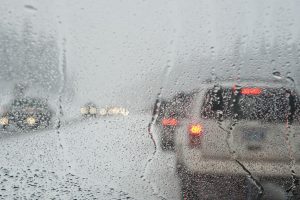
Driving on snow or ice is a treacherous activity some of us in Chicago and other parts of the country cannot avoid. The US Department of Transportation Federal Highway Department reported a 10 year average from 2002-2012 of over 200,000 accidents whose root cause was winter precipitation. These weather related accidents make up 17% of all accidents. So we wanted to take a closer look at winter driving facts vs fiction to help people be more safe. Below are some popular myths we’re busting for driving in snow and ice this winter.
1. Under-inflate your tires for better traction.
No. Please don’t. For every 10 degree drop in air temperature, your tires decrease about 1-2 pound of psi naturally, so you should actually be adding air to your tires in winter as needed. Tires should be properly inflated at all times. An under-inflated tire is the leading cause of tire failure. And I can’t think of a worse time to be changing a flat than in the sub-zero temps of a Chicago winter.
2. Winter tires are not necessary unless there is snow on the ground.
Nope. Winter tires are not only designed to better handle ice and snow conditions, but also hold up better on cold surfaces. They stay more pliable on cold pavement which provides more surface contact with roadways. If you drive on remote roads or have a rear-wheel drive vehicle, winter tires are always recommended.
3. 4WD and AWD wheel drive vehicles are safer in winter weather.
Not necessarily. There might be a slight improvement on acceleration with these vehicles but don’t be lured into a false sense of security. AWD and 4WD will not help you in stopping which is the most dangerous part of driving in snow and ice. AAA suggests following the vehicle in front of you by a 8-10 second margin to provide sufficient stopping time.
4. An emergency kit is not necessary if you only drive a short distance.
No really. In January of 2014 just a few inches of snow cause a total shutdown of Atlanta, Georgia’s roadways. Commuters who normally reach home in less than 30 minutes were stranded for up to 20 hours. Keeping blankets, water, food and even a map in the car can save your life.
5. Behind the snowplow is the safest place to drive.
Well, that depends… Obviously, the area behind the snowplow will be more clear than the area in front of it. However, you should stay 70 feet behind the plow to avoid being in the driver’s blind spot and from having your visibility blocked by the blowing snow caused by the plow.
Brancato Snow & Ice Management, located in Elk Grove Village, Illinois specializes in providing commercial winter maintenance programs including snow removal and salting services to Chicagoland and most of Illinois. Contact us today for information on how we can assist your business’s parking areas and keep facilities safe for your customers and employees.
